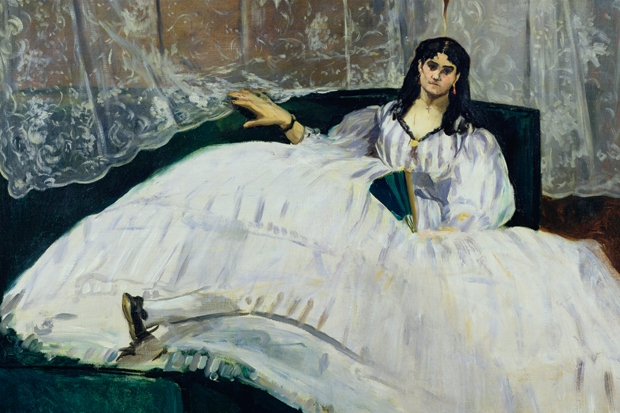This novel is based on the life of Charles Baudelaire and the relationship he enjoyed — or endured — with his Haiti-born mistress, his Black Venus, Jeanne Duval.
We first see him in 1842, a young poet of 20, making his dandyish way through the slums of Paris to meet his friends at a cabaret theatre for an evening of wine and hashish. Here he will encounter for the first time his future muse. She is voluptuous, in a long red dress, singing risqué songs. In no time he is unlacing her boots and preparing to squander the legacy which he is shortly expecting.
However, there are, as the author shows us, three people in this relationship, and the third one is Baudelaire’s mother. Charles was five when his father died, and for two blissful years he and his mother were everything to each other. He would cling to her at bedtime, snuggle onto her lap at breakfast, nestle against her breast at the opera. When she married again after two years of widowhood, he locked himself in his bedroom, broke his window and threw everything out of it, including his rocking horse.
But now that his father’s legacy is almost within reach, his adored mother has heard about her son’s unsuitable passion. Duval, she learns, is of mixed race and turbulent background; also she is extravagant, uninhibited and has a handbag full of laudanum. One can see that a mother would have misgivings. She and her husband stop him from gaining access to the legacy.
Deep in debt, the poet embarks on a financially precarious life with Jeanne which lasts for nearly 20 years. They move amongst their peers in the café society of writers and artists; Victor Hugo often picks up the bill; Manet paints a portrait of Jeanne, which Baudelaire dislikes.
His own poems celebrate Duval’s ‘ebony thighs’, her ‘dark eyes like the chimneys of her soul’, and, above all, her famous breasts, which perhaps transport him back to the idyllic period of his childhood with his mother. He finds a publisher who is prepared to take the risk of printing his poems — ‘a businessman with the honor of a family firm to restore’ (American spelling is used throughout the novel). This publisher sets to work on the collection which will be Les Fleurs du Mal, thus incurring no end of trouble for himself, and culminating in the famous obscenity trial.
Middle age does not treat the lovers kindly. They part, and the last glimpse Baudelaire catches of Jeanne is of her limping down a road in her black and silver cloak. The novel is full of such cinematic episodes. One of the author’s previous books has been filmed, so perhaps this one may reach the screen. The final scene might show an elderly, frail Baudelaire being rescued and succoured by his first and last love, his mother.





Comments